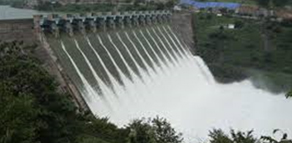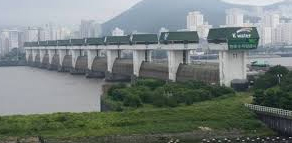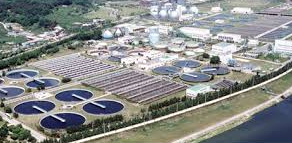Comprehensive Safety Diagnosis
-
Types of utilization of water facilities
Dam facilities: dam (concrete dam, fill dam)
River facilities: estuary bank (breakwater), floodgate, embankment, multi-function dammed pool for irrigation
water and sewage facilities: water and sewage, sewage treatment plant, terminal disposal plant of sewage
-
Precise safety diagnosis performance procedure
-
step 01
Basic survey data analysis
-
step 02
detailed appearance examination test, measurement
-
step 03
Analysis of investigation results, safety review
-
step 04
Facility evaluation status, safety, comprehensive evaluation
-
step 05
Making a report for suggestion of repair and reinforcement plan
-
-
Inspection method
Dam
-
Leakage in Filldam should be investigated in the location of occurrence, amount, and turbidity, and the location of leakage is mainly focused on the downstream slope of the dam, the foundation on the downstream side of the dam, both sides, and the junction between the dam and foreign materials.
Sudden increase in leakage without special reason means dam damage is progressing, and in particular, changing from clear water to cloudy or turbid due to leakage means loss of earth particles due to piping phenomenon, so conduct a detailed investigation.
The concrete dam is to be carefully inspected for cracks, subsidence and deterioration, and the dam deformation due to excessive stress and subsidence of the foundation ground should be checked.
Since cracks can act as a path for leakage and act as an important factor of dam defects, the location, direction, depth, and length of cracks should be carefully checked. In particular, check for joint damage and leakage conditions in concrete dams.
Differential settlement in Filldam not only accompanies cracks, but also when the settlement rate is high, piping may occur due to water leakage through the dam or the foundation ground, or loss of material due to internal erosion and depression of the lower part of the dam may occur. A careful check must be made for excessive subsidence or differential settlement.
In the upstream slope, erosion or depression may occur due to the reservoir water, and slope activity may occur when the water level in the reservoir changes sharply.
On the downstream slopes, the change of the water level, the change of the water leakage considering the weather, the temperature change, and the presence of wetlands are investigated.
In order to review the slope stability of both sides, the topography and geological conditions, vegetation conditions, and tension cracks are investigated.
Investigation of the occurrence of displacement, cracks, and deformation of the guardrail in the top of dam, and the damage condition of the buried instrument and other facilities located on the dam surface.
If there is a change large enough to affect the safety of the dam as a result of reviewing the measurement data, carefully review the correlation with other inspection results.
Investigation of the vegetation condition in the dam body and the damage condition caused by the habitat of harmful animals
Spillway
-
As a spillway is an important substructure of a dam, damage to the spillway often acts as an unsafe factor directly or indirectly to the dam, so a close investigation is carried out on cracks, deformation, settlement, erosion, etc., and functional impediments are also investigated.
Most of the cracks in spillway are concrete cracks and are caused by poor concrete placement, excess stress of backfill material, differential settlement of the foundation ground, alkali aggregate reaction, weathering, peeling, etc. Therefore, careful investigation should be conducted upon inspection.
Leakage from the structure of a spillway is often caused by poor handling of the contact surface between the spillway and the foundation ground, and the contact surface between the spillway and the dam, so a detailed investigation is required.
Deformation of the spillway interferes with the flow of water, causing various types of damage, and erosion occurs by the flow of water directly acting on the surface. In addition, erosion on the concrete surface is accelerated due to corrosion caused by the alkali aggregate reaction, so a detailed inspection is carried out.
Checking the state of swirl currents in the piers that occur when the spillway sluice gate is opened. At this time, the swirl current that is abnormal and entrains a large amount of air is the main cause of concrete scouring, so a careful investigation is conducted.
Checking the spillway floor for concrete displacement, cracks, severe wear or scouring and sedimentation of soil.
Concrete joints are structurally fragile, and there is a high possibility of defects in the construction process. At the same time, moisture freezing in the cracks has a great influence on the damage of the structure.
Checking the vegetation condition of the approach channel, the condition of the concrete floor, the slope activity, and obstacles to the channel.
Checking the damage condition of the air intake device to prevent damage to the spillway flow arrangement part due to cavitation.
Water-intake facility
-
Checking the water intake tower and water intake port deformation and damage, surface water intake facility operation, and pressure control tank structure damage.
Investigation into the vibration absorbing device of the water intake structure, the gate, the winch, the control device, and the electric device.
The state of attachment of floating matter to the vibration absorbing device, and the inflow prevention facility, etc. should be investigated.
Water pressure and Water conveyance tunnel
-
Checking the rock thickness at the entrance and exit of the tunnel, slope collapse, rockfall prevention, retaining walls, and the stability of the structure.
Checking water pipe's defects through dam caused by insufficient capacity and malfunction of air removal valves and vacuum valves, vulnerability to obstacles, cracks, displacements, material deterioration, cavitation, erosion, and leakage around the tunnel for the water pipe passing through the dam.
Checking the condition of the lining inside the tunnel, leaks and groundwater inflow, rebar corrosion, concrete deterioration, and irregularities in hydraulic movement.
Bridge around the dam
-
Inspection of concrete cracking and deterioration.
Checking girder sag state.
Checking for damage to anchor block.
Checking the road surface condition and connections.
Checking flange crack and rebar corrosion
Checking the sagging condition of the top plate.
Checking concrete state under bridge.
Plant structure and Floodway
-
Checking slab and wall cracks and leaks.
Checking the condition of the drainage facilities around the building.
Checking the building paint condition and cracks
Inspection of the bottom of the spillway, concrete floor, baffle wall, revetment, etc.
Checking the hydraulic pipe structure for cracks.
Inspection of the cracks, displacements and drainage of drainage holes in both retaining walls.
Review on damage caused by cavitation, erosion, shock, vibration, and garbage inflow.
Flood gate and Winch
-
Inspection of the sluice gate, a winch, and on-site control panel should be carried out for the following items, and detailed contents can be changed and implemented according to the type of drain gate (lock gate).
<Machine Facility Diagnosis>
Classification Contents of detailed inspection Guide Roller Crack, Corrosion, Fixation, Fastening Rubber Seal Leakage, Bolted condition Sheave Crack, Corrosion, Fixedness state Hinge Crack, Fixedness state Drum & Gear Crack, Wear condition Thrust Brake Bend wear, Drum crack Rope End Spindle Rope state, Driving state Sluice Gate & Doorframe Painting & Corrosion state <Electrical Equipment Diagnosis>
Classification Contents of detailed inspection Distributing board Insulation treatment, Terminal treatment, Relay contact, Terminal tightening, Control panel Insulation treatment, Relay contact, Terminal tightening, Grounding resistance Motor operating condition Winding insulation resistance, Abnormal temperature overheating, Grounding resistance Cables and wires Conduit corrosion, Duct damage, Insulation resistance -
Types of material testing for precision safety diagnosis of the water facilities
Ultrasonic transmission speed test
Rebar exploration test
Carbonation depth measurement
Chloride content test
Rebar corrosion test
Crack depth investigation
Coating thickness measurement
Whether the floodgate works
Rebound hardness test





